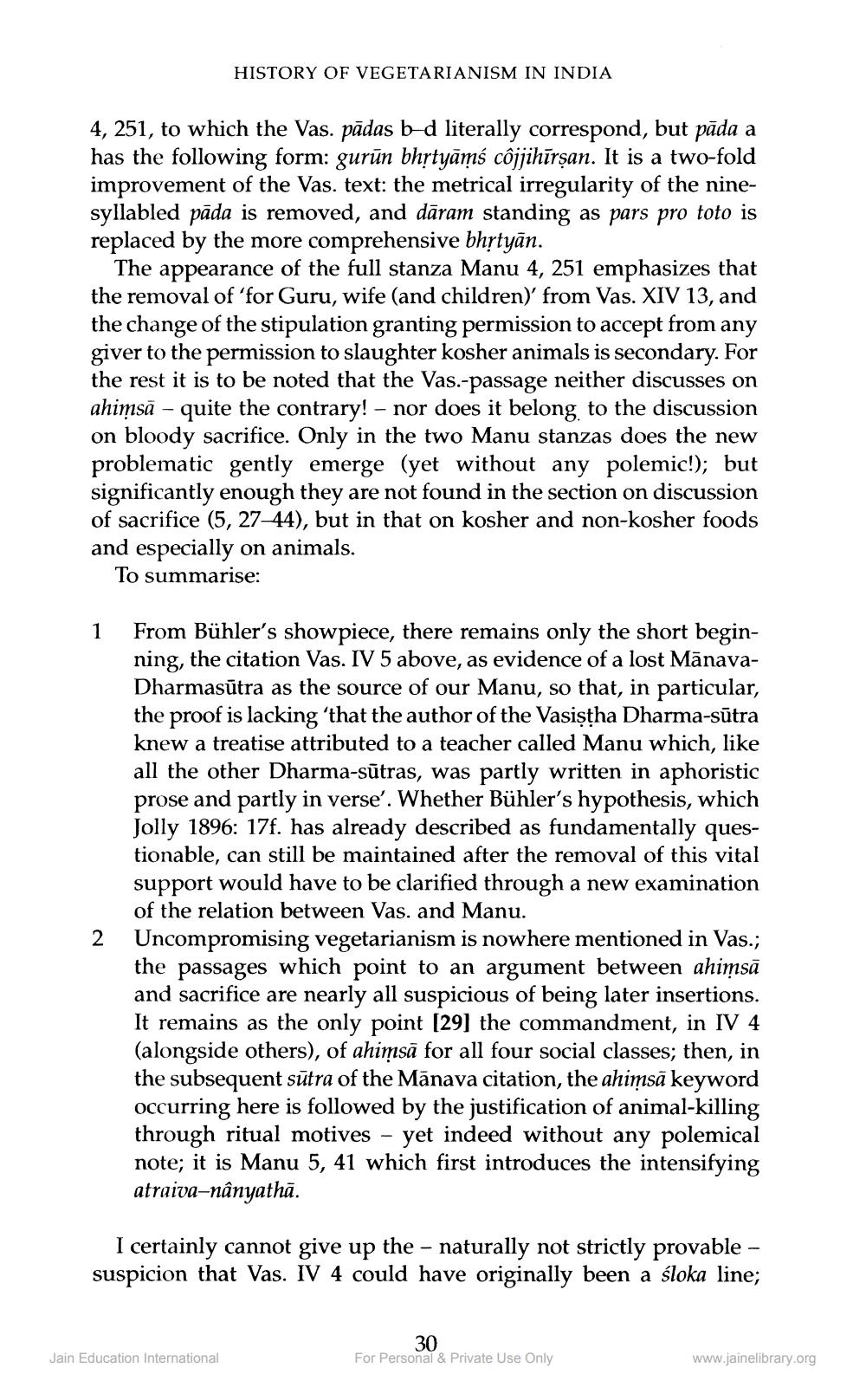________________
HISTORY OF VEGETARIANISM IN INDIA
4, 251, to which the Vas. pādas b-d literally correspond, but pāda a has the following form: gurūn bhrtyāmś côjihīrşan. It is a two-fold improvement of the Vas. text: the metrical irregularity of the ninesyllabled pāda is removed, and dāram standing as pars pro toto is replaced by the more comprehensive bhṛtyān.
The appearance of the full stanza Manu 4, 251 emphasizes that the removal of 'for Guru, wife (and children)' from Vas. XIV 13, and the change of the stipulation granting permission to accept from any giver to the permission to slaughter kosher animals is secondary. For the rest it is to be noted that the Vas.-passage neither discusses on ahimsā - quite the contrary! - nor does it belong to the discussion on bloody sacrifice. Only in the two Manu stanzas does the new problematic gently emerge (yet without any polemic!); but significantly enough they are not found in the section on discussion of sacrifice (5, 27-44), but in that on kosher and non-kosher foods and especially on animals.
To summarise:
From Bühler's showpiece, there remains only the short beginning, the citation Vas. IV 5 above, as evidence of a lost MānavaDharmasūtra as the source of our Manu, so that, in particular, the proof is lacking 'that the author of the Vasiştha Dharma-sūtra knew a treatise attributed to a teacher called Manu which, like all the other Dharma-sūtras, was partly written in aphoristic prose and partly in verse'. Whether Bühler's hypothesis, which Jolly 1896: 17f. has already described as fundamentally questionable, can still be maintained after the removal of this vital support would have to be clarified through a new examination of the relation between Vas. and Manu. Uncompromising vegetarianism is nowhere mentioned in Vas.; the passages which point to an argument between ahimsā and sacrifice are nearly all suspicious of being later insertions. It remains as the only point [29] the commandment, in IV 4 (alongside others), of ahimsā for all four social classes; then, in the subsequent sūtra of the Mānava citation, the ahimsā keyword occurring here is followed by the justification of animal-killing through ritual motives - yet indeed without any polemical note; it is Manu 5, 41 which first introduces the intensifying atraiva-nânyathā.
I certainly cannot give up the - naturally not strictly provable - suspicion that Vas. IV 4 could have originally been a sloka line;
30
Jain Education International
For Personal & Private Use Only
www.jainelibrary.org




